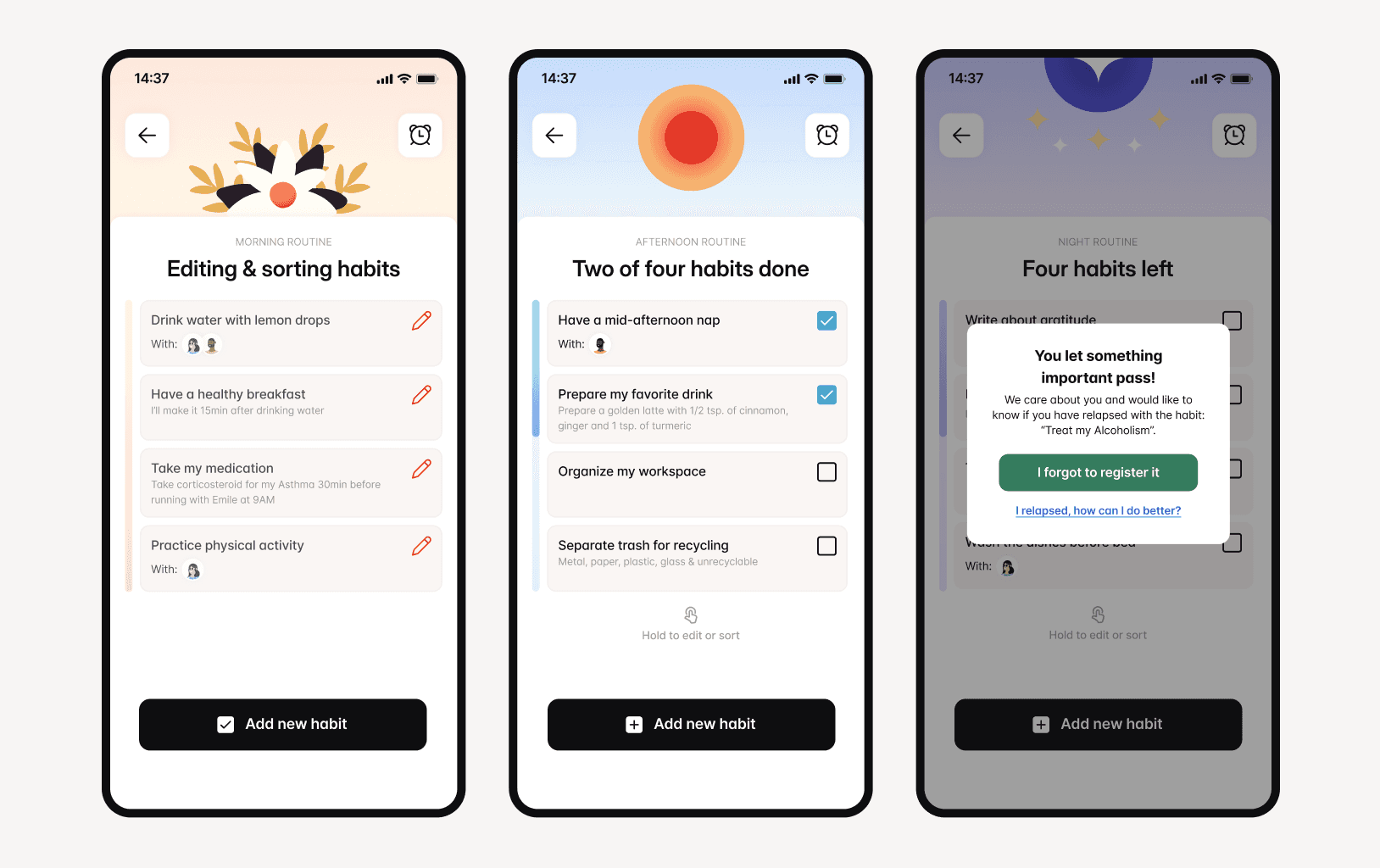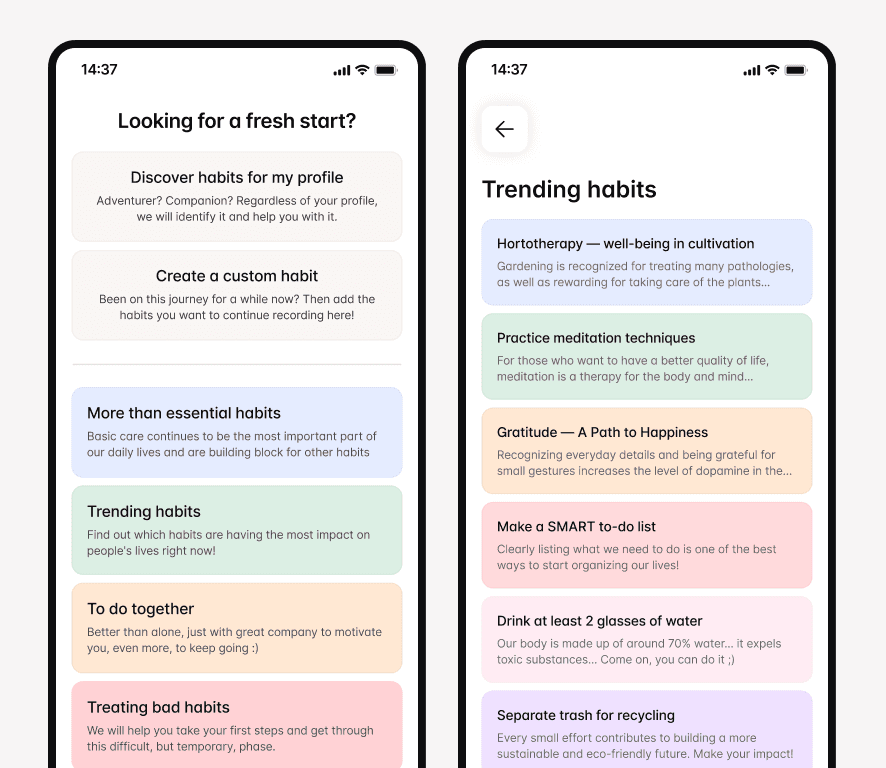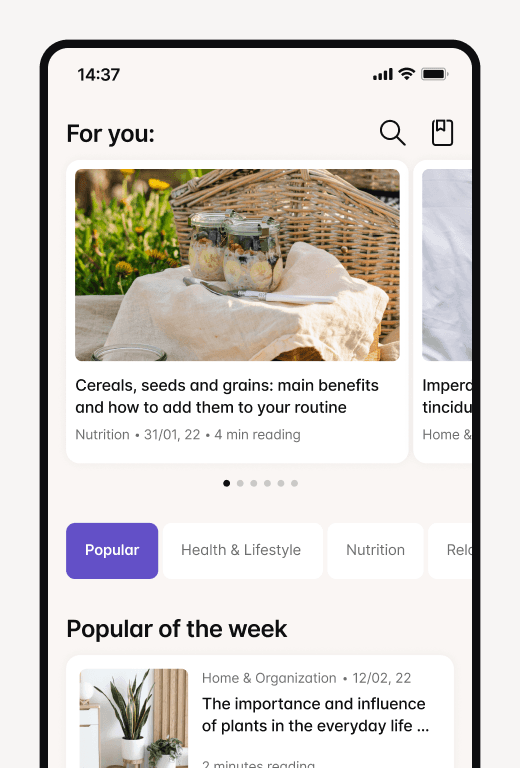“To make scientifically-proven health information accessible so people can make more conscious decisions about their lifestyle and well-being.”
I aimed to evaluate the main changes in the Brazilian population’s lifestyle during the social isolation of the COVID-19 pandemic and find means of intervention.
In conclusion, the emergence and intensification of bad habits resulted from the emotional and financial instability and social barriers imposed at the time.
After different research, I and three volunteers co-designed one of the solutions that would promote awareness and encourage lifestyle changes, based on scientific models, usability tests, and questionnaires.
the concerning scenario
COVID forced people to change their entire way of living, so old habits fell apart, and new ones emerged. This shift raised a critical concern: How could this accelerate or intensify health deterioration?
Although becoming healthier was trendy, dozens of scientific, social, and governmental articles I read about indicated an evident change in health—and for the worse, at all levels.
Financial stability, addictions, medical treatment, nutrition, mobility, screen time, and mental state became alarming topics.
Finding Clarity in Chaos
Then, something clicked… “Habits builds health. Belief, context, and action build habits.” So, how might I find a solution for part of this chaos?

The Behaviroural Drivers Model. UNICEF, 2019
After studying what drives human behaviors and healthy changes and interviewing 14 people who were trying to build new habits, I found a possible answer:
a digital service to inform people about what they can take control of and how they can smoothly move from contemplating a healthy lifestyle to practicing it.
Digitalizing it would enable an inexpensive cost in updating content with new studies and the many other advantages like cloud storage and devices’ functionalities and convenience.
DISCOVERING opportunities
But it was too easy. I spent days reading about behavioral change strategies and reflecting on my failures. Then, I was reassured by a 27.000-participant study that said:
“People are willing to do their bit to improve their lives [...] but there is a gap between aspiration and real change.
Evidence from this study identifies the importance of removing barriers and providing clear information.”
It was an optimistic direction to explore more of the concrete ideas I had, like an all-in-one coaching platform or a digital magazine with personalized, digestible scientific content.
Discovering obstacles
The pandemic crisis persists. Most interviewees had an agitated life now and weren’t reflecting on their bad habits due to exhaustion and negative emotions, making them seek as much comfort as possible.
Of all existing solutions, especially apps, there was a discrepancy either in high-quality content or functionality, and none were engaging with those still contemplating a change.
In the sign of a market gap and the effectiveness in different aspects of the problem, I committed to ideating an app from scratch, even without many references.
developing the app
Luckily, 3 interviewees volunteered to co-create and revise with me an app that could fit into their everyday lives perfectly while considering a set of strategies for behavioral change.
I also built 2 archetypes based on insights from my interviews and informative videos to contextualize their experiences in habit change and establish design constraints.


The app’s goal was to build a simple journey to inform people about the benefits of each habit and assist in an effortless start, considering their context, support, external influence, value, and interest.

After qualitative and quantitative tests to iterate on the complete user journey to start and maintain habit changes, I delegate the Android beta version to be developed and launched to the grandest public.
Insights from the 1st quarter
Through different surveys, I collected user feedback about usability, content understanding, satisfaction and support to develop new habits. My expectation was that the app would approach:

After the end of the first quarter, from 1236 participants of 4202 users, the metrics showed a promising start:


However, I noticed the low star ratings came from older, non-tech-savvy users complaining about the complicated journey of setting a habit and the more complex language in health-related content.
PRODUCT VISION
In the end, the challenge is not to acknowledge the benefits of healthy habits or to prepare the perfect routine just to see everything failing quickly, but to motivate people to resist their own biology.
It will always be crucial to listen to people’s struggles throughout their journey, especially at the beginning, and encourage them to get our coaching and follow the social media content.




















